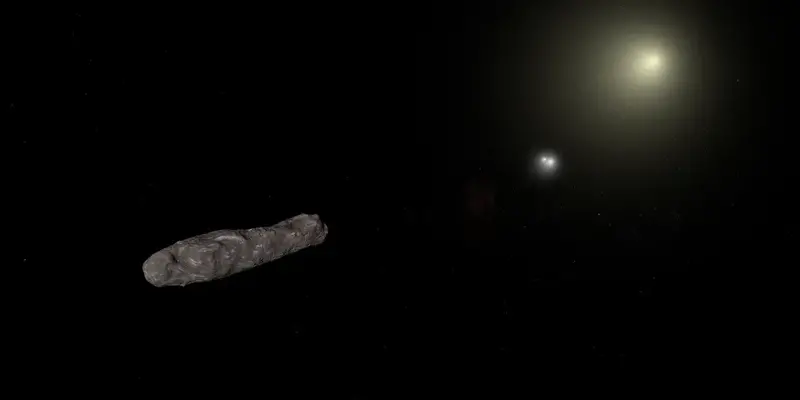Scientists say the chance of a collision is very low and if there is one, the object's position, timing and speed have been carefully calculated.

The chances of objects colliding with Earth are very low. Photo: Shutterstock .
Astronomers have calculated the risk of interstellar asteroids like 'Oumuamua and 3I/ATLAS hitting Earth. They concluded that while the chance of an impact with Earth is very low, they can still pinpoint the most vulnerable locations and times if one does occur.
It's been millions of years since our planet has been hit by a large asteroid, and even local damage is rare. Aside from the three interstellar objects we've discovered, 1I/'Oumuamua, 2I/Borisov, and 3I/ATLAS, scientists have recorded thousands of comets and asteroids that have passed closer to Earth than that.
Dr. Darryl Seligman of Michigan State University and some colleagues decided to dig deeper. They used what they knew about their position in the Milky Way to calculate the most likely path of the interstellar space, thereby determining the risk zone on Earth.
They estimate that over Earth’s history, between 1 and 10 100-meter-sized interstellar objects have collided with the Earth, based on very rough estimates of the number of objects ejected from other star systems. Unlike impacts from “native” asteroids or comets, these interstellar collisions are likely to be relatively evenly distributed over Earth’s history.
However, the likelihood of identifying impact craters is very low because most have been erased by tectonic activity or atmospheric impacts. The authors note that distinguishing impact craters caused by interstellar objects from other events will be difficult, but this does not affect the current risk prediction ability.
Theoretically, interstellar threats could come from any direction. However, an intruder is more likely to come from near the plane of the Milky Way, and can be detected by tracking the Milky Way's trajectory across the sky, rather than from high galactic latitudes.
They can determine the velocity of objects based on the gravitational pull from the Sun. If they are not faster, they will be pulled back into the orbit of this planet. The three objects we observed have peak speeds of 87.71 km/sec, 43.9 km/sec and 68.3 km/sec respectively.
The authors predict that the speed difference with respect to the Sun's gravity will be 45 km/s. Therefore, taking into account the motion of the Earth around the Sun, the speed of the interstellar collision is 72 km/s.
Models predicting the timing of interstellar collisions based on orbits show that the highest frequency occurs in the northern hemisphere winter, when the overall probability of a collision is highest, but the average object is not very fast. A smaller percentage suggests that a collision could occur in the northern hemisphere spring, but if it does, the object would be moving faster.
In short, the study shows that the chances of such an object hitting Earth during any given season are extremely low, and the odds are relatively small. Scientists can also model and calculate their position, timing, and speed as they approach.
